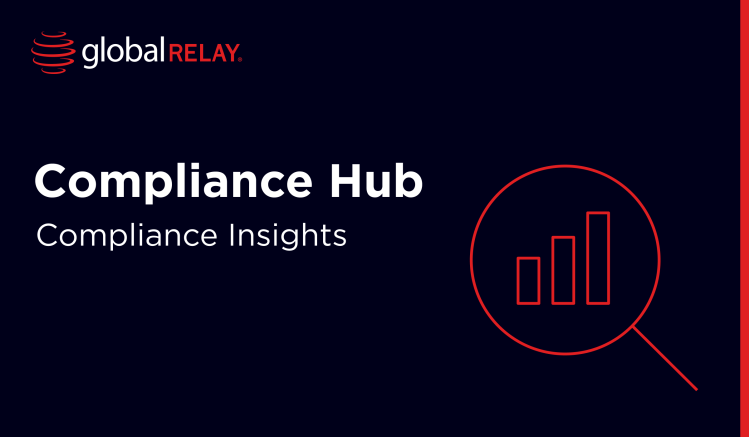
What are the pros and cons of using LLMs in compliance?
In today's rapidly evolving regulatory landscape, firms across industries are turning to Large Language Models (LLMs) to manage compliance challenges and drive efficiencies. These sophisticated Artificial Intelligence (AI) systems are reshaping how organizations approach regulatory challenges, offering both exciting opportunities and potential pitfalls.
Written by a human
In Brief:
- LLMs enhance compliance efficiency across various sectors globally
- Real-world applications demonstrate tangible benefits and challenges
- Balancing AI capabilities with human oversight is crucial for success
The role of LLMs in compliance
LLMs are revolutionizing compliance processes across industries worldwide. From finance to healthcare, these AI-powered systems help firms interpret complex regulations, analyze vast amounts of data, and make informed decisions. By leveraging natural language processing, LLMs can sift through regulatory texts, internal policies, and communications to identify potential compliance issues and suggest appropriate actions.
What are the benefits of using LLMs in compliance?
1. Enhanced efficiency and accuracy
LLMs significantly streamline compliance processes, allowing teams to focus on high-value tasks. For instance, in the U.K., HSBC has implemented AI technologies to detect suspicious activity and comply with Financial Conduct Authority regulations. This approach has improved accuracy in customer due diligence processes while reducing the time required for manual reviews.
2. Enhanced efficiency and accuracy
In the EU, Deutsche Bank has employed AI-driven tools to ensure adherence to Anti-Money Laundering regulations, such as its “Black Forest” model. These systems provide continuous surveillance of transactions across multiple jurisdictions, improving compliance efficiency and reducing the risk of regulatory fines.
3. Improved risk assessment and compliance
Google Cloud has partnered with Mayo Clinic to implement its generative AI software, specifically the Enterprise Search in Generative AI App Builder tool, to enhance healthcare workflows and compliance. This AI system is designed to be HIPAA-compliant and aims to streamline access to patient records, clinical protocols, and research papers across multiple sources all while maintaining strict compliance with regulatory requirements. By leveraging Google-level search capabilities, the tool helps healthcare professionals quickly find and interpret complex medical information, potentially reducing compliance risks associated with data access and management.
What are the risks of using LLMs in compliance?
Despite their potential benefits, LLMs present several challenges in the global compliance landscape which compliance professional must be aware of.
1. Data privacy and security concerns
LLMs require access to vast amounts of data, which may include sensitive information. Firms must ensure robust data protection measures to comply with regulations like the General Data Protection Regulation in the EU, the California Consumer Privacy Act in the U.S., and similar laws in other countries.
2. Algorithmic bias
LLMs can inadvertently perpetuate or amplify biases present in their training data, potentially leading to discriminatory outcomes in compliance decisions. This risk is particularly concerning in areas such as lending, hiring, and risk assessment across various jurisdictions.
3. Lack of transparency
The “black box” nature of LLMs can make it difficult to explain the reasoning behind their decisions, which may be problematic in regulatory audits or legal proceedings in any country.
4. Regulatory uncertainty
As LLM technology continues to evolves at a tremendous pace, regulatory frameworks struggle to keep up. For example, the U.S. Food and Drug Administration and European Medicines Agency are working to develop new guidelines for AI in healthcare; however, firms must steer a course through an uncertain legal environment in the meantime.
The future of compliance: Human expertise meets AI innovation
As we look to the future of compliance, the synergy between human expertise and AI capabilities becomes increasingly crucial. LLMs are transforming the field by enhancing efficiency, real-time monitoring, and risk assessment across industries.
However, while these powerful tools can help navigate complex regulatory landscapes, the human element remains irreplaceable. Compliance professionals must adapt their skills to work alongside AI systems, leveraging insights while providing critical oversight and ethical judgment. This balance is essential to address persistent challenges such as data privacy concerns and algorithmic bias.
Consider a global financial institution implementing an LLM-powered compliance system to monitor cross-border transactions for potential money laundering activities. The AI system flags a series of transactions between two companies as potentially suspicious based on unusual patterns. Here, the human compliance officer’s role is crucial. They review the AI’s findings, considering contextual factors such as the companies’ business models, industry norms, and geopolitical situations that the AI might not fully grasp. The officer may then decide to investigate further, dismiss the alert, or report the activity to the relevant authorities.
Driving innovation forward while managing risk
The case for robust compliance systems has never been stronger in this period of rapid technological advancement and multifaceted regulatory requirements. And LLM-powered compliance solutions offer the agility and intelligence needed to navigate this challenging environment effectively across different countries and regions. By implementing comprehensive compliance systems that leverage LLMs, firms can:
- Stay ahead of regulatory changes in multiple jurisdictions
- Reduce the risk of costly compliance breaches globally
- Improve operational efficiency across international operations
- Enhance decision-making with data-driven insights from various markets
- Build trust with stakeholders and customers worldwide
As time moves on, continued innovation in AI technologies for compliance is expected—including more sophisticated LLMs—while new regulations specifically addressing AI use will continue to emerge globally. Firms that proactively develop responsible and responsive AI strategies will be best positioned to thrive.
Summary
While LLMs offer exciting possibilities for enhancing compliance efforts across industries and borders, their implementation must be guided by careful consideration of ethical implications, regulatory requirements, and the irreplaceable value of human judgment. As this field evolves, maintaining this balance will be key to realizing the full potential of LLMs while safeguarding against their potential pitfalls in a global context.
